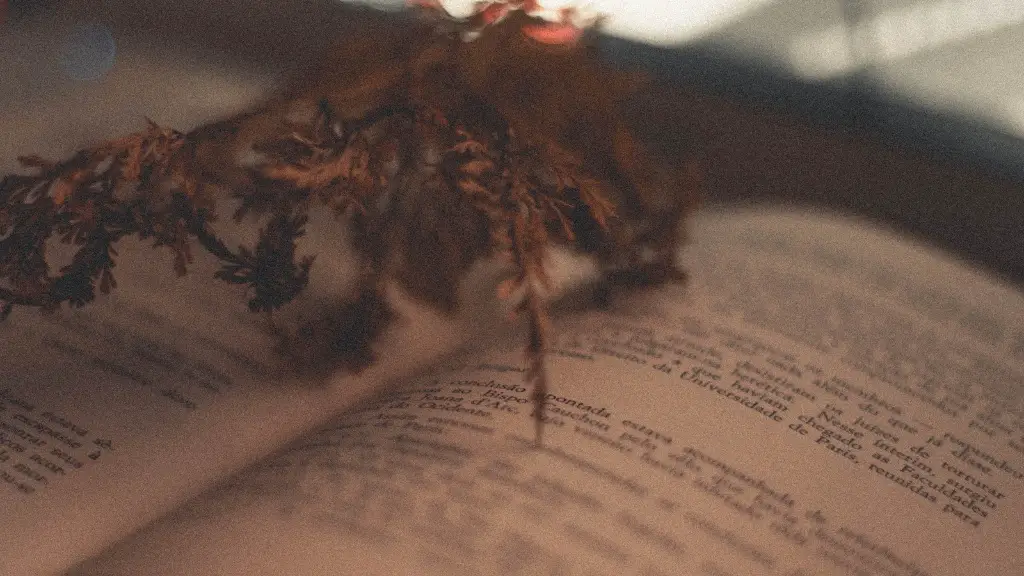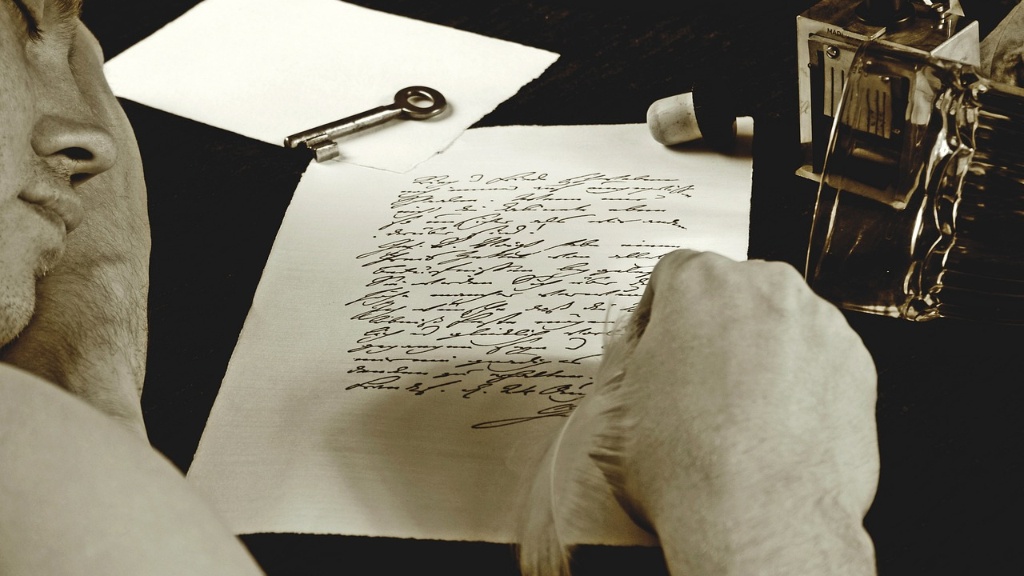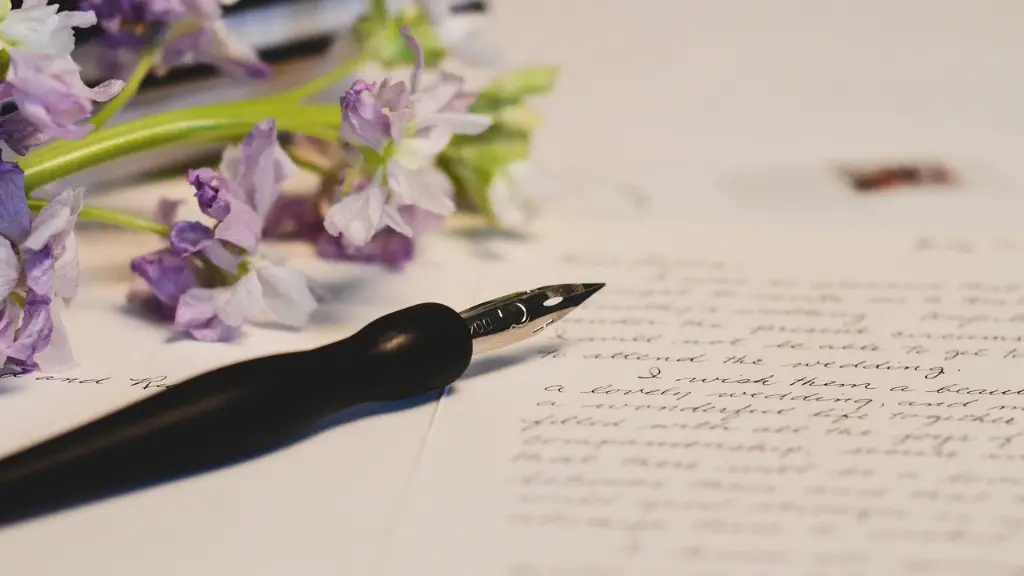One of the most important and unique aspects of poetry is the use of sestet. The sestet is the final six lines of a poem, usually concluding the poem in some way. Many poems have a sestet, and the use of the sestet can be a powerful way to build tension and create a memorable ending. Understanding the concept of sestet and the ways it’s used in poetry can help you to improve your own writing.
The term sestet, derives from the Latin sextet, and is defined as a group of six lines of verse or a poem composed of six lines. A sestet may also indicate the last six lines of a poem and can also refer to a seven-stanza poem, with the seventh stanza being made up of six lines.
In literature and poetry, a poem’s sestet generally follows the eight-line octave and serves to provide a resolution to a poem’s narrative or to provide commentary or insight. Unlike the octave, the sestet does not necessarily always adhere to the same meter or rhyme scheme. While the content of the octave typically sets up the poem’s story or introduces a problem, the sestet resolves, ties together, or provides comment on the octave.
The sestet also serves a unique purpose in the sonnet form, which was invented in 13th century Italy. A sonnet is a fourteen line poem composed of two stanzas, an octave and a sestet. The octave sets up the problem, while the sestet provides commentary or a resolution. The Petrarchan Sonnet is composed of two parts: an octave with a rhyme scheme of abbaabba and a sestet with a rhyme scheme of either cdecde or cdcdcd.
Lines in a sestet often act like end-stops and can be used to alter a poem’s pacing, helping it to move quickly towards a conclusion. They can also help to emphasize a poem’s resolutions or provide further insight into the topics explored in the poem. These six lines can be powerful and memorable, making a lasting impression on the reader.
The sestet often leads to an altered flow of a poem. It can be used to pivot off of the eight lines that precede it, allowing for a clever transition between the octave and the sestet. This can be achieved through another poetic device, such as a metaphor, simile or enjambment, which enables the poet to draw the reader in further to the poem.
Looking closely at how poets use the sestet can inspire your own writing. Breaking a poem down into its component parts, such as its octave and sestet, can help to understand and appreciate more deeply what makes a poem successful. Exploring the historical and traditional form of the Petrarchan Sonnet can also help you to craft your own poems and create powerful sestets.
Rhyme Scheme
The sestet is often tied to the idea of a rhyme scheme, as this is where you can experiment with variety. It is important to remember that while the rhyme scheme is important in poetry, it doesn’t have to follow a strict pattern. You can choose different sestet forms that are more minimal, or you can go with a more complex rhyme scheme. Whether you opt for a regular rhyme scheme or a complex one, it is important to ensure that it serves the purpose of the poem.
It is also important to consider using different poetic devices within your sestet. These might include end-stopping, enjambment and refrain. End-stopping is a device that allows the reader to pause in the middle of a line of verse, rather than allowing the thought to flow uninterrupted across a number of lines. Enjambment is when the sentence flows from one line to the next without any punctuation or pause, allowing for a more natural-sounding rhythm. Finally, refrain is the repetition of a line or phrase which can be used in the sestet to emphasize the poem’s message or to provide an emotional hook.
Using Imagery to Enhance Meaning
Poetic imagery can be used to enhance the meaning of a poem by providing a visual or sensory representation of the concepts being discussed. Imagery can be used to engage the reader, build tension and create an emotional connection with the poem. Imagery can also be used to emphasize the importance of certain words or phrases by illustrating them visually, adding depth to the poem’s meaning.
When composing a poem, it is important to think of the sestet as a place to weave in imagery and to draw the poem’s narrative threads together. Images can be woven into the lines and used to bring the poem’s story to a climactic conclusion. Make sure to give thought to the images that you’ll use and ensure that they will be effective in conveying your poem’s theme and meaning.
Emotional Appeal
A successful sestet should have an emotional impact on the reader. By crafting a powerful conclusion to your poem, you can stay with your reader and leave a lasting impression. To create an emotional appeal, it is important to consider the feelings you want your reader to experience, such as love, joy, sadness or despair. Then, use imagery and language to create the desired emotion.
Another way to add emotional appeal to your sestet is to introduce a metaphor. This can be used to convey a complex idea quickly and succinctly. Metaphors can be used to transform a mundane idea into something more exciting and can also help to engage the reader.
Choosing the Right Words
The words that you choose to use in your sestet are important as they should capture the poem’s main idea and sum it up in a concise and memorable way. Think carefully about the words that you choose and use imagery, jargon, or technical language to ensure the poem resonates with the reader. Also, consider using words that are unfamiliar to the reader to draw them in further.
The sestet is an important element of any poem, and taking the time to understand its structure and purpose can help you to create more effective poems. By understanding what a sestet is and how it’s used in poetry, you can craft powerful and memorable endings to your poems, which will leave a lasting impression on the reader.



